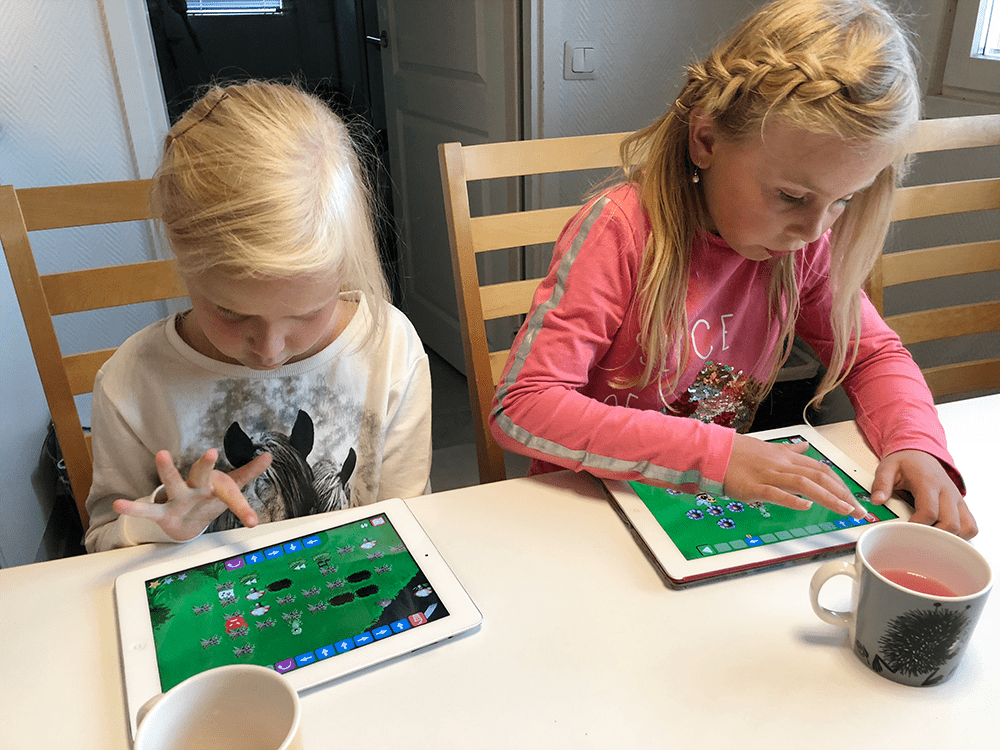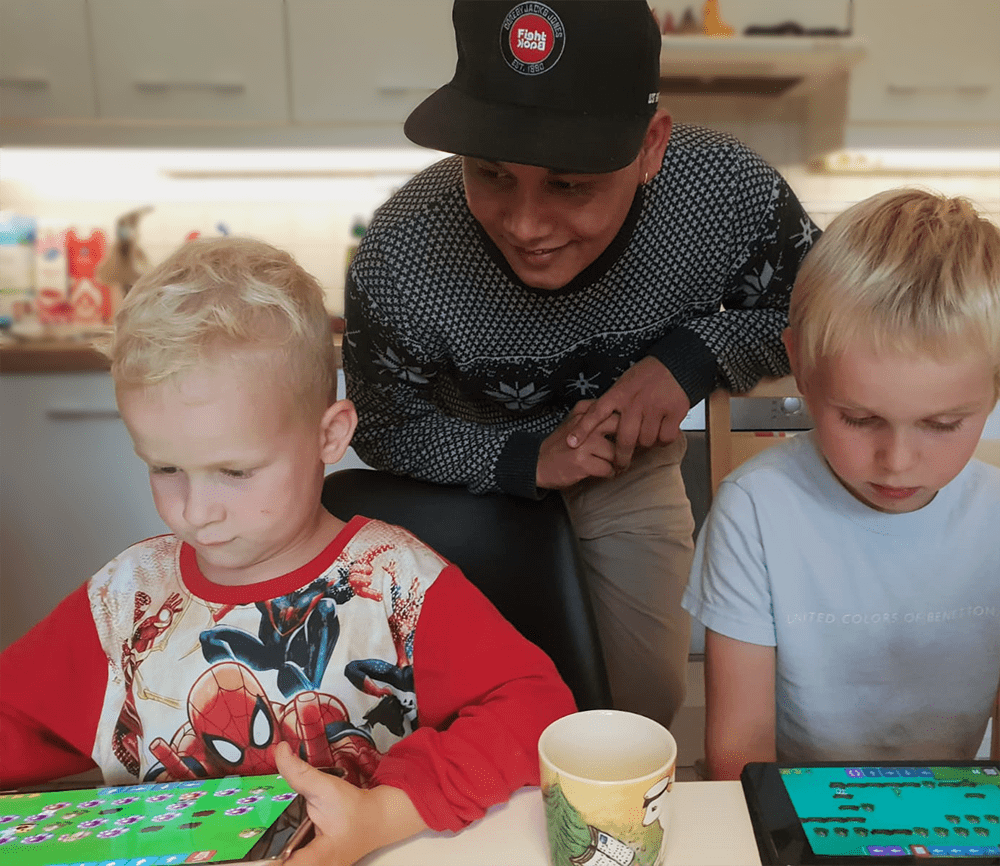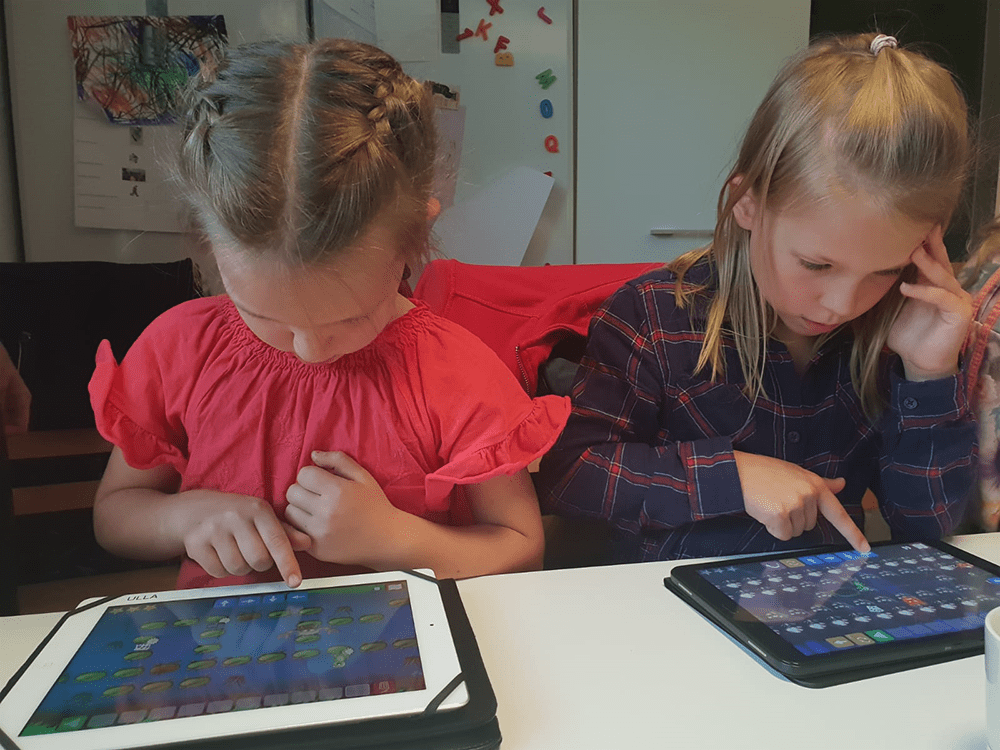The testing and the results
For a while now we have been developing a mobile game designed to teach kids the fundamentals of computer programming. Making the game took a lot of hard work from our development team, hard work which paid off last week when we were finally able to get some real users in for testing!
The first run at testing a new project is always the most exciting but can also be more than a little nerve racking! For the first time, you get to see your target user’s initial reactions. Lots of questions arise and you start to worry – will they like it? Is it too complex? Will the game crash immediately? However, we can get the information we need at this early stage of testing, we can address any functional or usability issues or bugs and ensure that the development plan is heading in the right direction.
So, on to the most important question – what did we learn from this testing?
Who we tested
We carried out our initial game testing with a target user group of 55 kids, aged 5-8 years, from different elementary schools in the Tampere region of Finland.
UI, UX and Functionality Testing
We primarily wanted to focus on testing the UI (User Interface), UX (User Experience) and the functionality of our game. We were curious about the familiarity that this particular target user group would have with existing games and apps. Would these young users recognize a ‘play’ button? Would they understand (or have the patience for) a tutorial? How would they approach the game inputs (buttons etc.)
The results amazed us. All of our test group participants showed intuitive thinking and even the youngest kids succeeded in loading and beginning the game. The majority of the kids had played similar games already and were therefore familiar with the logic of the game. As the kids kept playing the game and advanced onto further levels, they found many bugs that we were not aware of.
Users are creative and testing allows us to see the different ways in which our particular target group approach our product. While we are happy that our game is understandable and playable, this testing helps us to identify the product’s weaknesses, from an outsider’s point of view. The testing highlighted the areas that we need to work on to improve the game, areas that we may never have identified by ourselves. That is the beauty of testing with real-world end users.
It was really amazing to see how smart these small kids were! You should never underestimate your end users, no matter how small they are.

Testing the Fun Factor:
Our game is an educational game. As the logic of the game can be quite ‘deep’, we advise parents, teachers or adults to supervise children when they are playing the game. The main focus of the game is on education, but we also want our users to have fun! We believe in “learning through entertainment” so we designed our game in such a way that kids will see the game as something fun and entertaining, making learning more accessible.
In the testing session, we carefully observed each kid as they played the game and tried to identify the elements they liked the most about the game and also the elements that they disliked. Did they think the game was fun? Well, almost all of the kids liked our characters, enemy characters, our game graphics, and the theme. There were diverse opinions and suggestions from boys and girls about adding new characters. This feedback was somewhat expected, but highly regarded!
After completing a level in the game, the player receives 1 to 3 yellow golden stars. Every kid wanted to get three stars in the game. They were really enthusiastic about what was coming next. They wanted to keep playing level after level. Many kids were saying “Yesss!” and asking for high fives every time they completed a level. The whole testing was full of mind-blowing excitement from them. Therefore, we gathered from this that the game does indeed have quite a fun factor!

Audio/Music testing
Music is the main theme of the game. Throughout the game, Hopper, the main character, collects musical notes and pieces of music. Because of this, it was really important that we creating good music and sounds for the game. Along with the style of the graphics and artwork in the game, music is key in creating an atmosphere and mood for the game – it can affect how the user feels while playing the game. Of course, we loved the sounds and music that we created, but we wanted to know what the target group thought of it. What kind of emotions and thoughts would it stir up for them? During testing, we uncovered some complaints about different aspects of the game from kids, teachers, and parents, but when it came to Audio/Music testing, the only feedback we got was positive. This was a really proud moment for us. At least something we have created was close to perfect. That made us really happy.
Complexity and reliability of the game
The basic principle of our game is that it gets more complex along the way. Some kids understood the logic easily and some took some time to understand. Some completed a few levels very fast and some took a little longer time to complete the same number of levels. But this was to be expected. Our main goal was to teach problem-solving skills to the kids. In many cases during the testing, no matter how long it took, we let the kids solve by themselves without our help. It took time but they did it. That was the goal.

We can see from this testing that we have a game that has a lot of potentials. As it stands at its current stage of development, the game has many strengths but also some weaknesses that our team can now tackle and iron out. Looking at our user group interacting with our product brought home the ever important need to focus on TESTING, TESTING, and more TESTING from the very start of development. Testing the game in different stages with your target group helps improve the game and ultimately, will give users the best experience.
Really big thanks to Peltovainion Päiväkoti, Irjalan Päiväkoti and Emmi Neilimo for making the testing happen.
We will release our game in mid-October 2018. Please follow us on our social media sites to be updated.
Check our book: Coding Alphabets For Kids
Follow us on : Facebook Instagram LinkedIn
Written By: Apil Karki
